
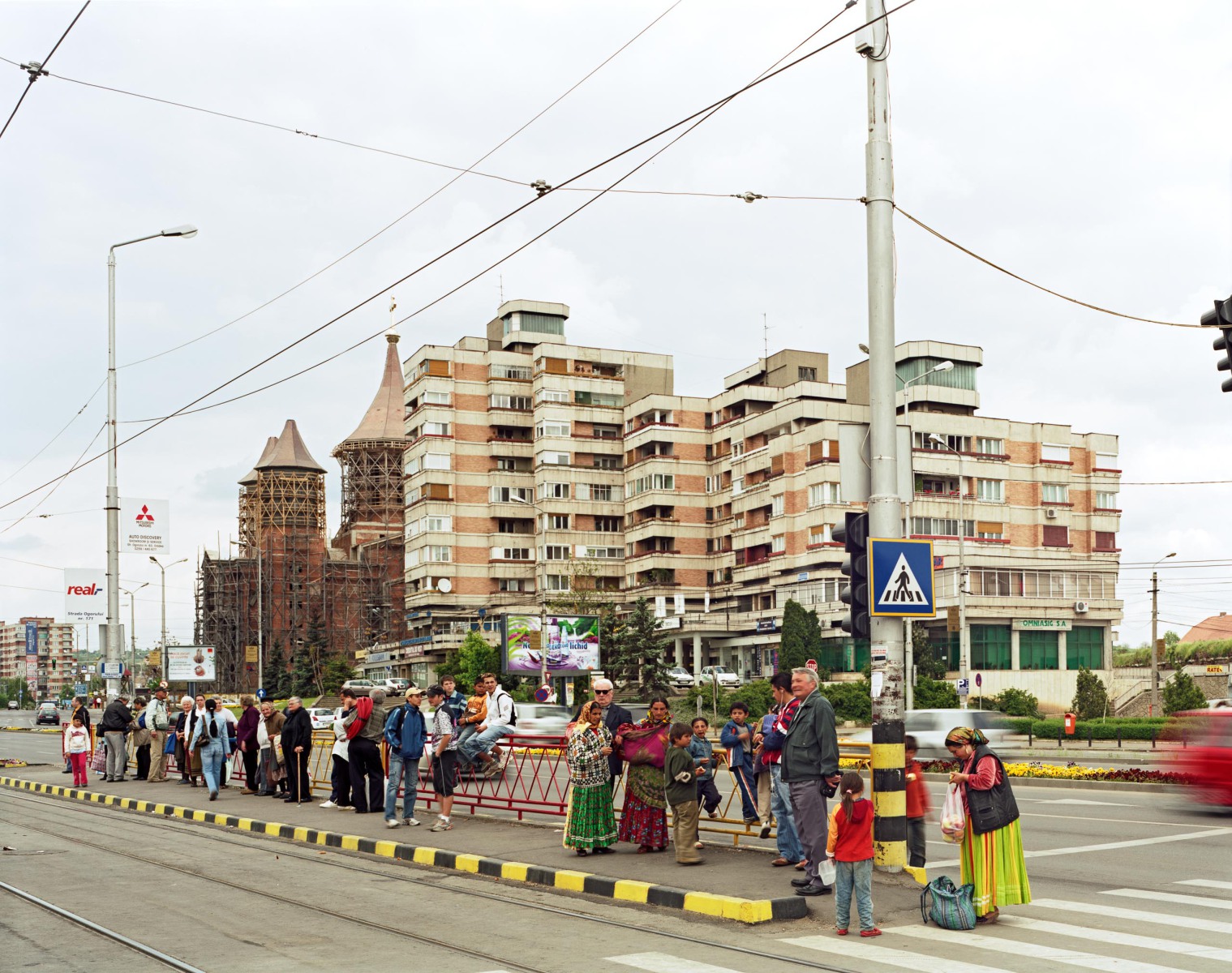


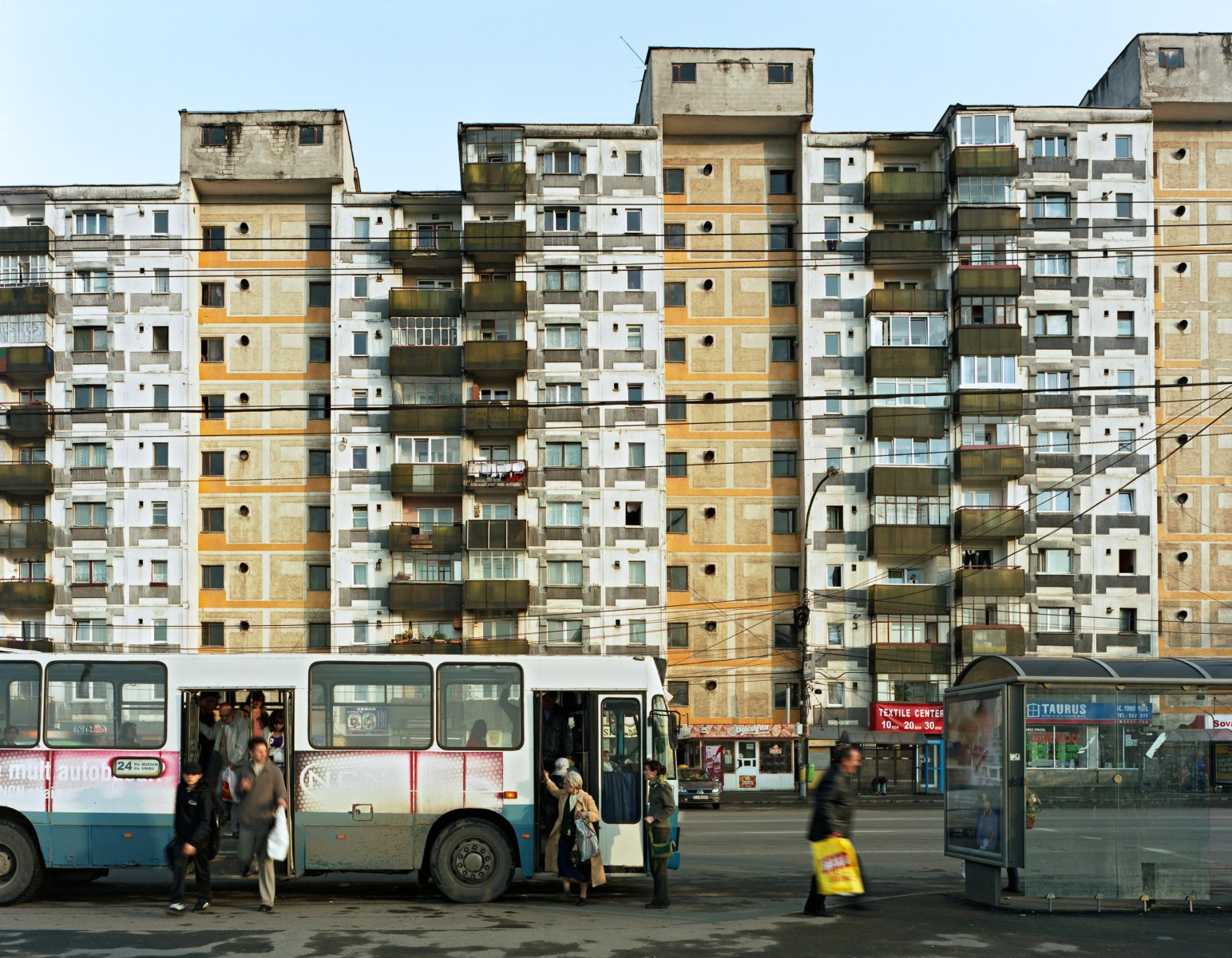

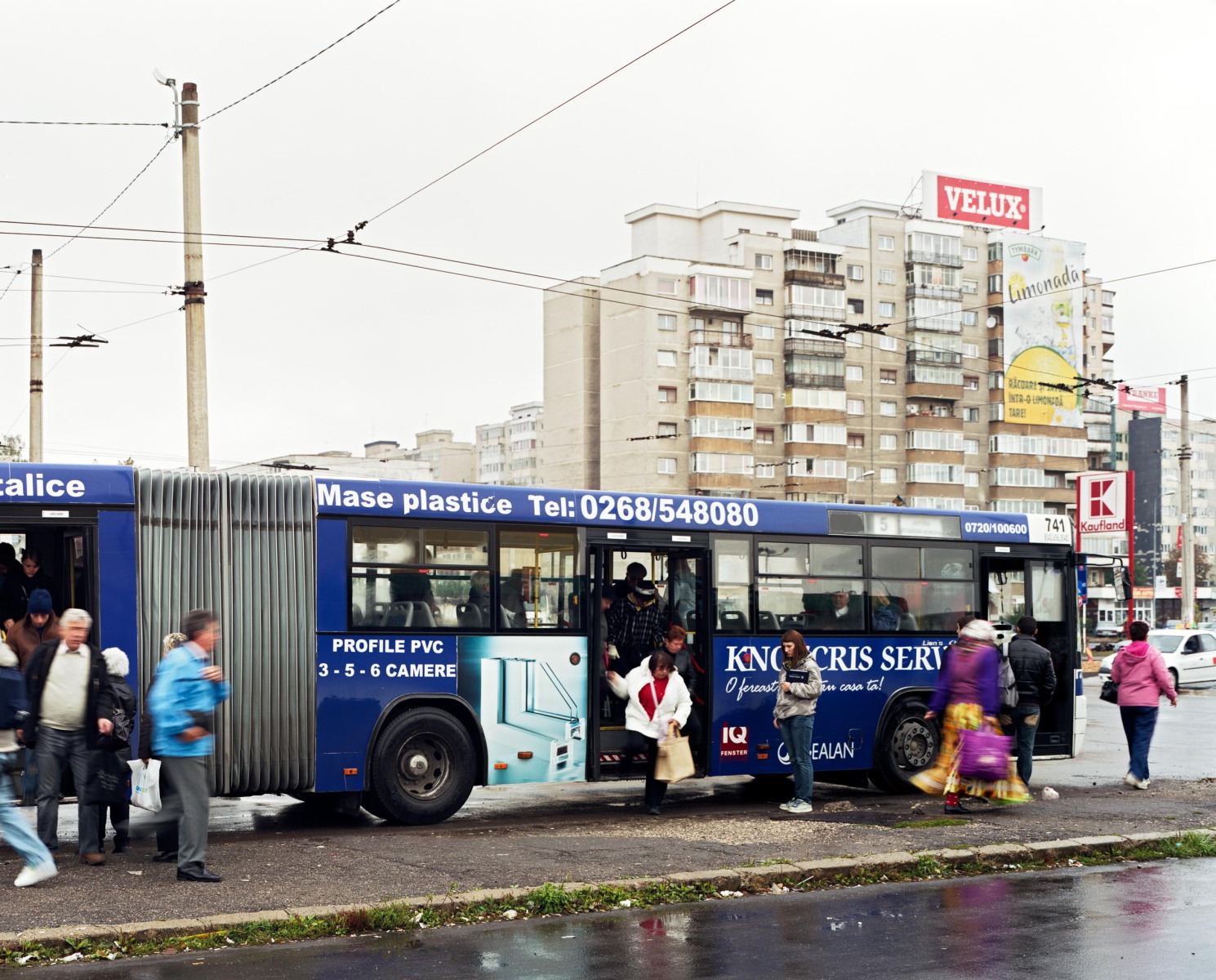


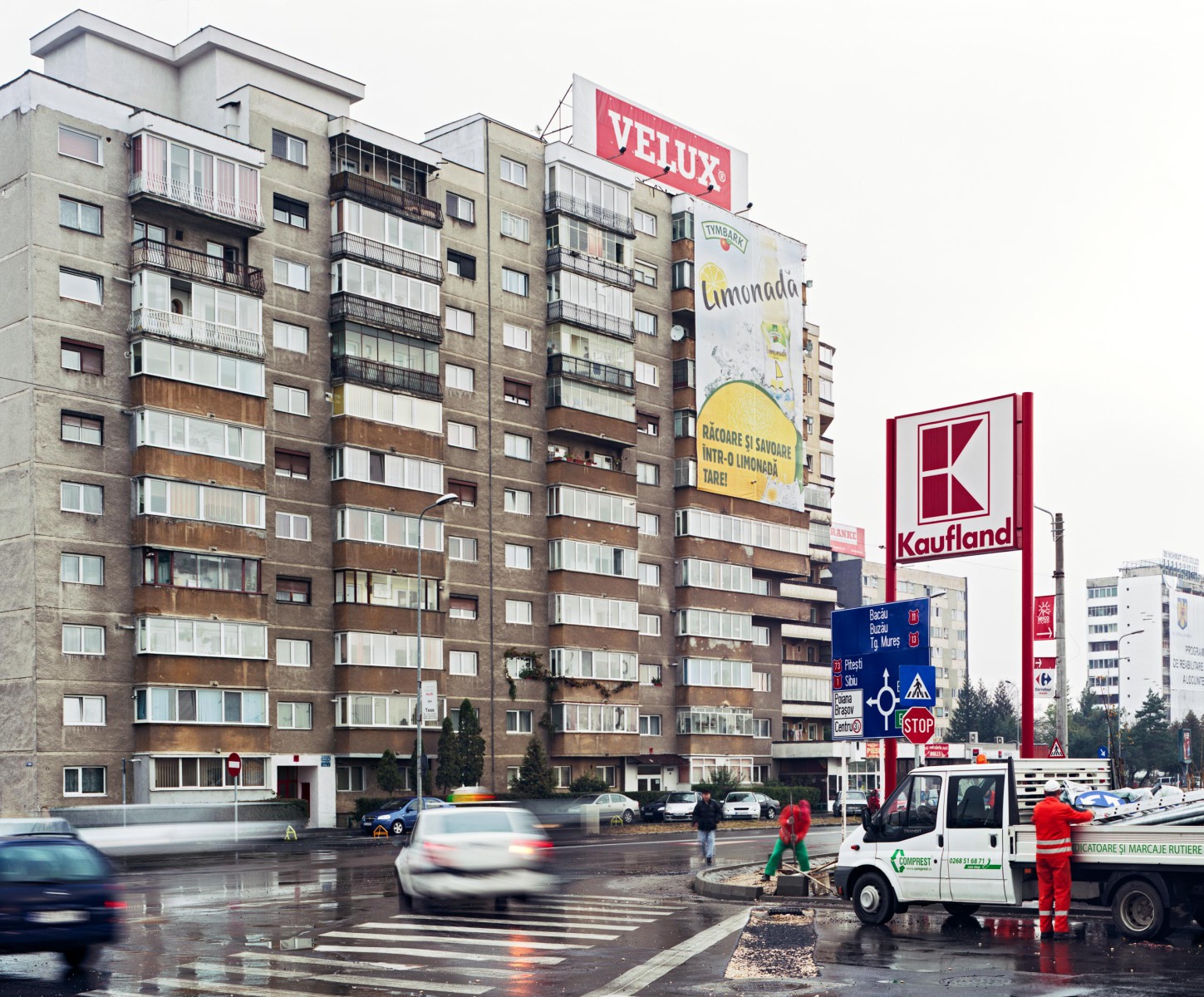
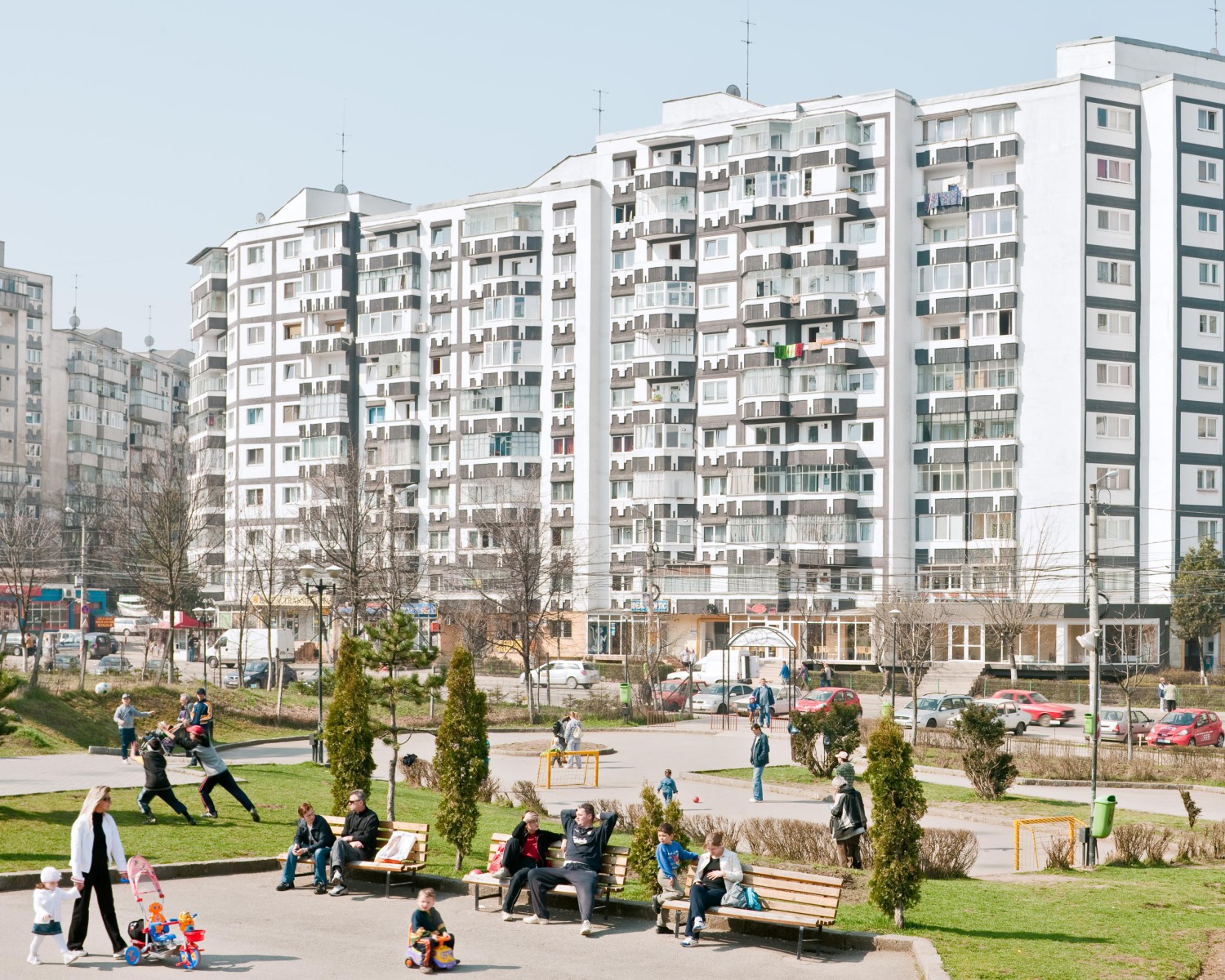
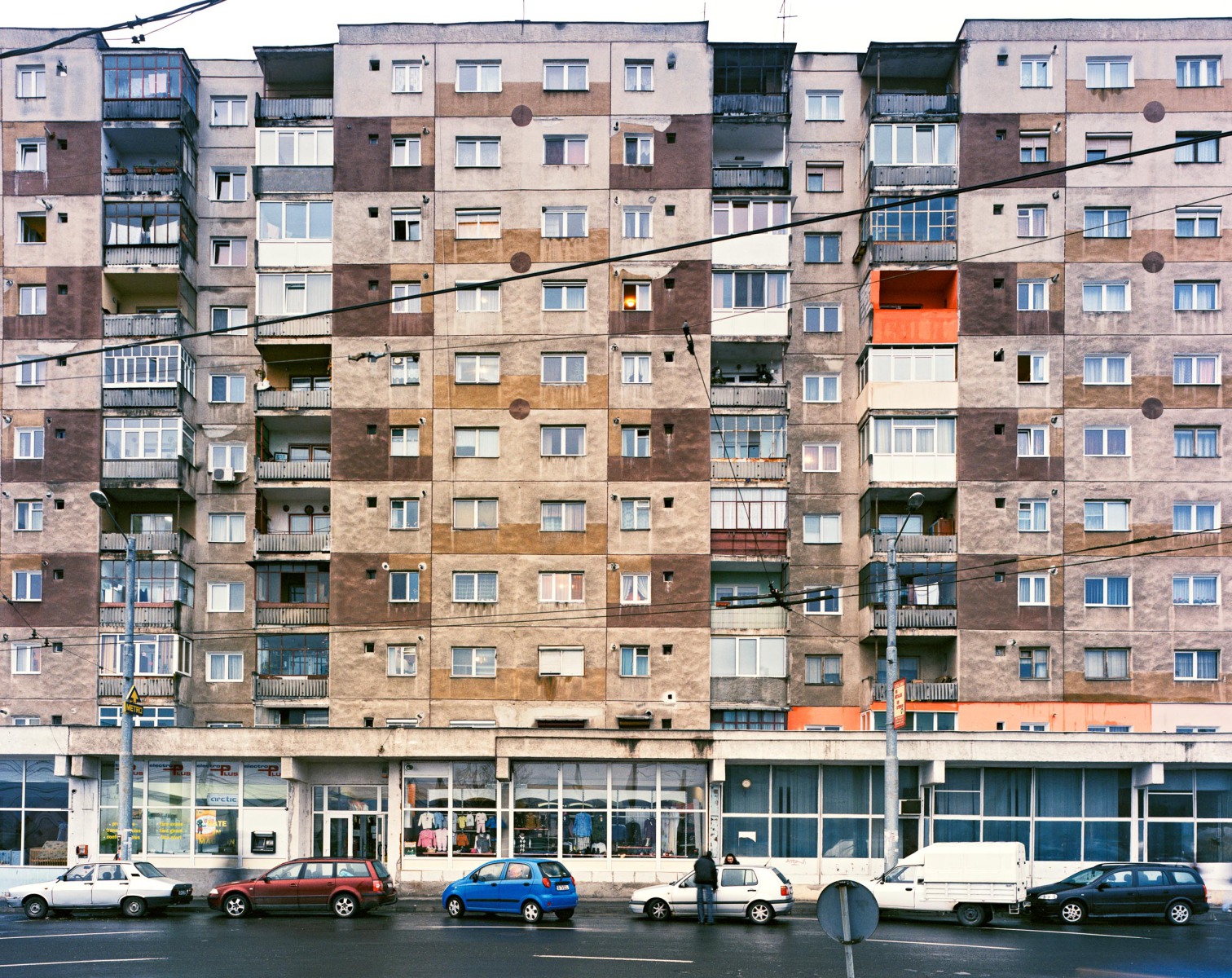

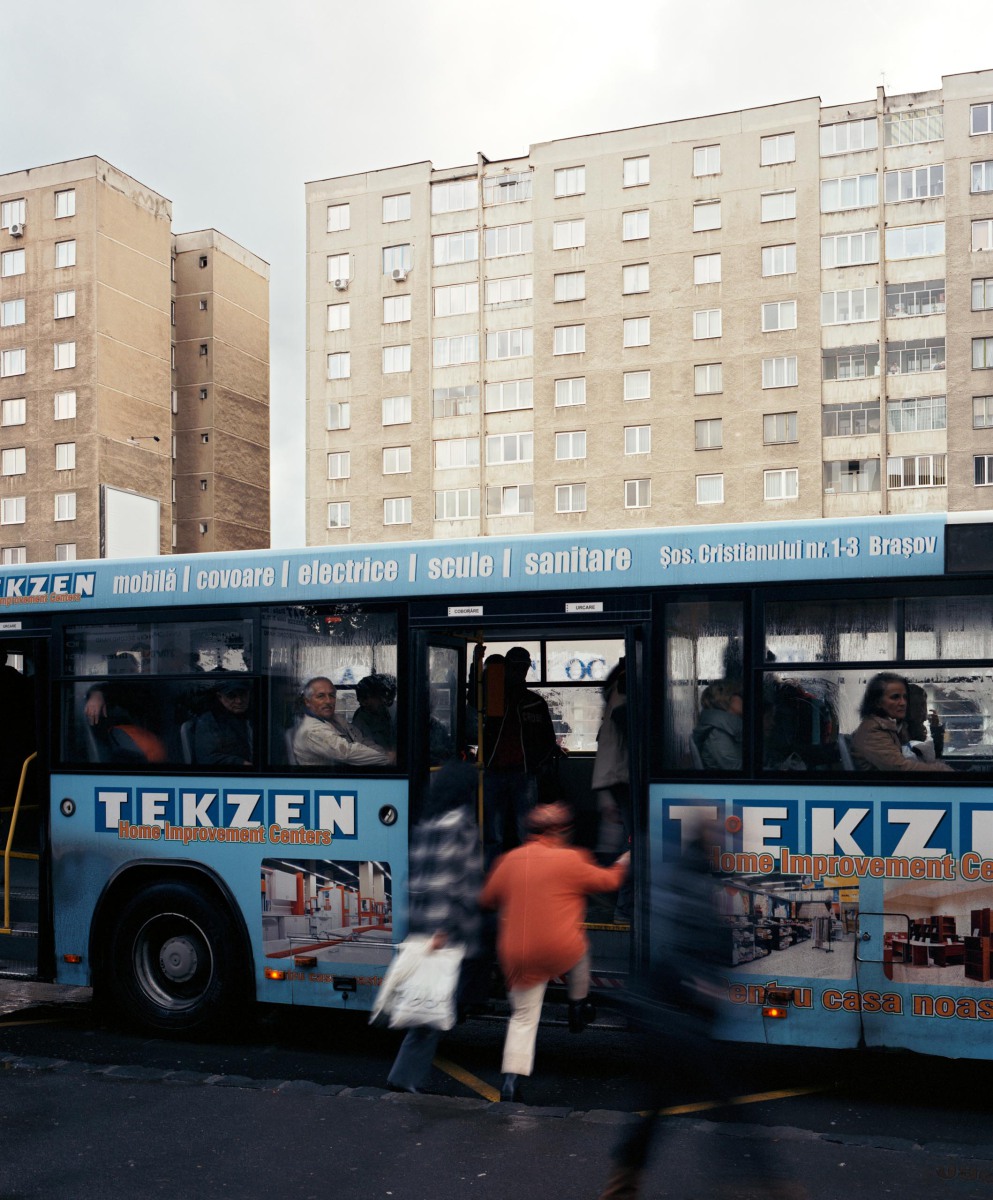
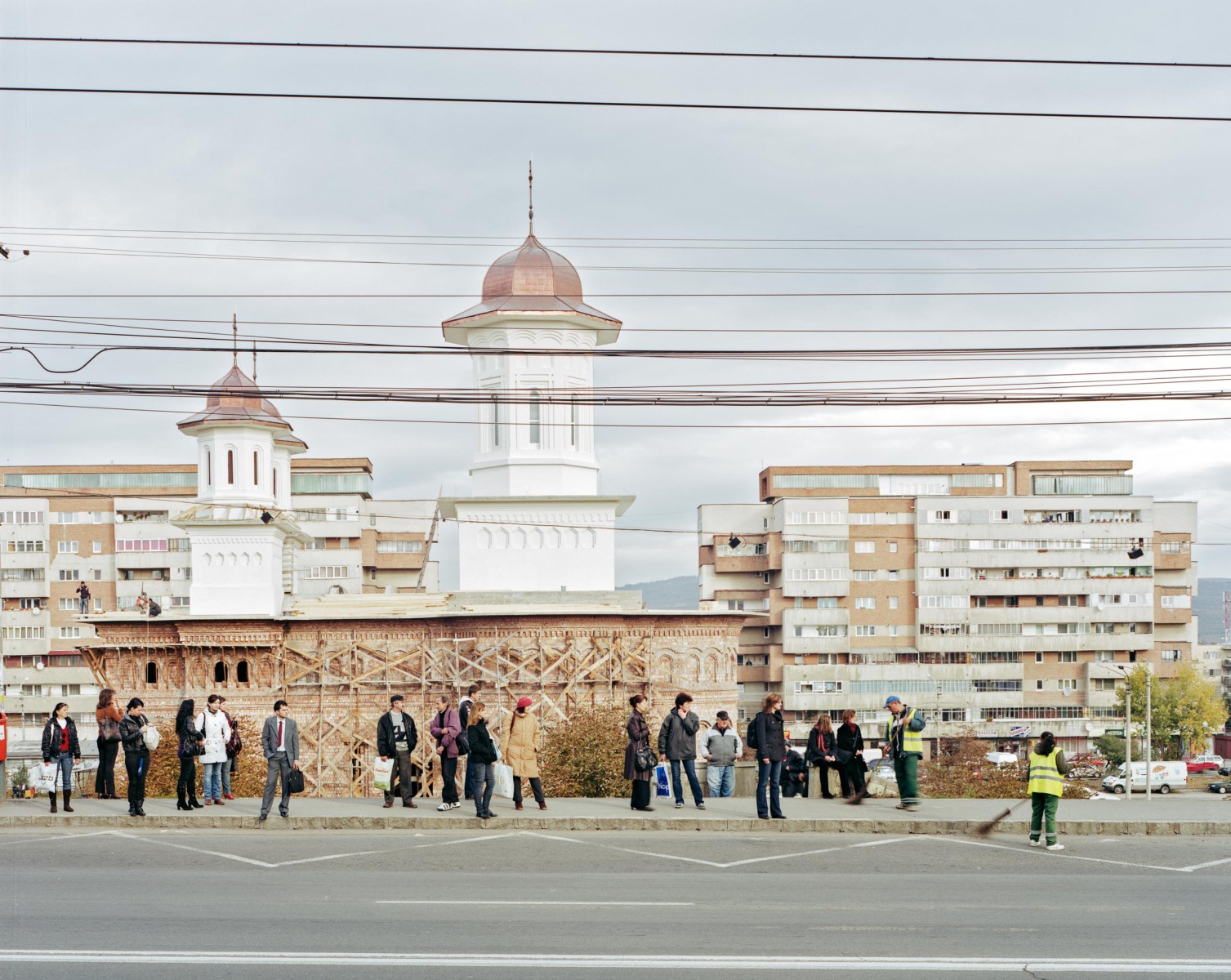
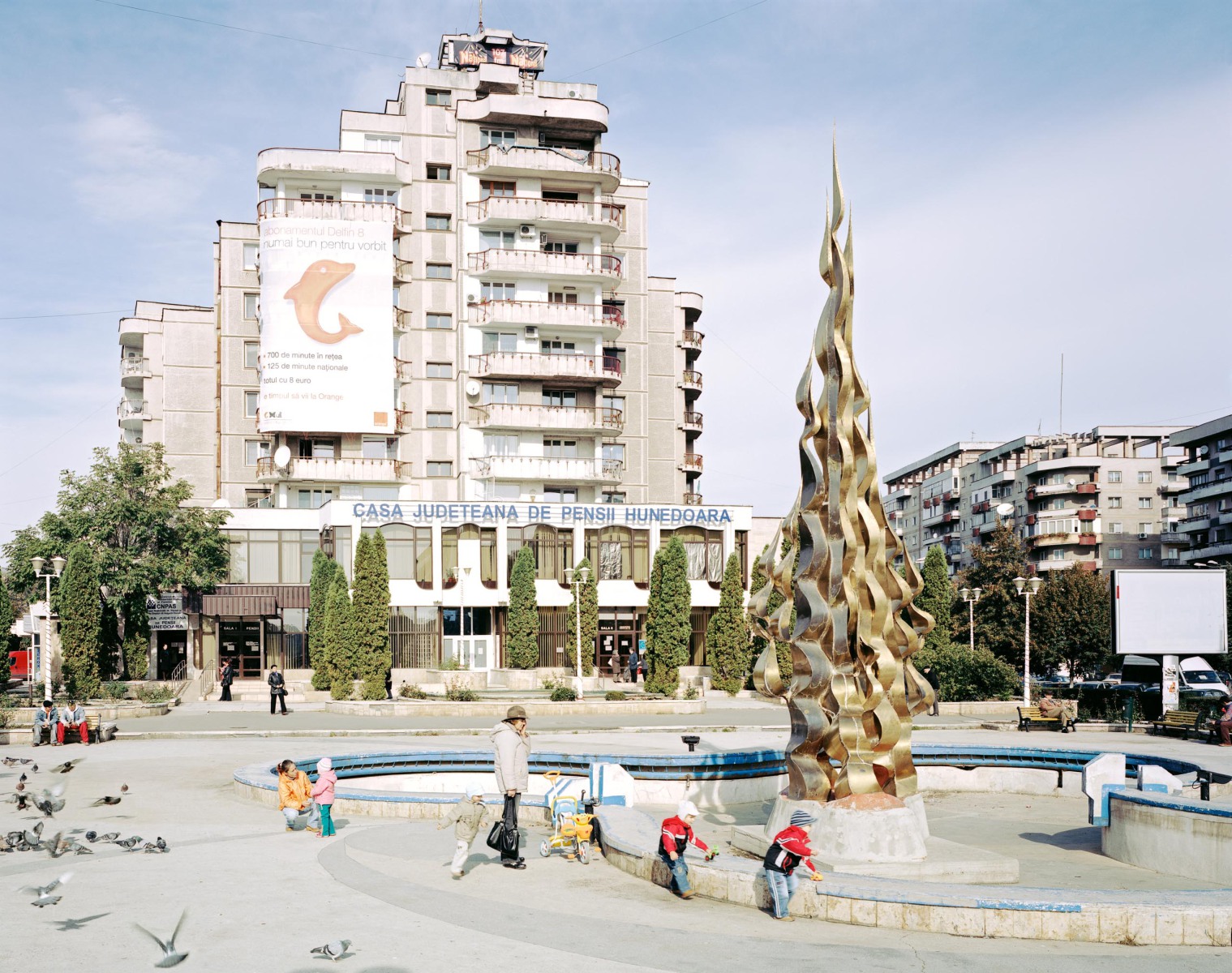

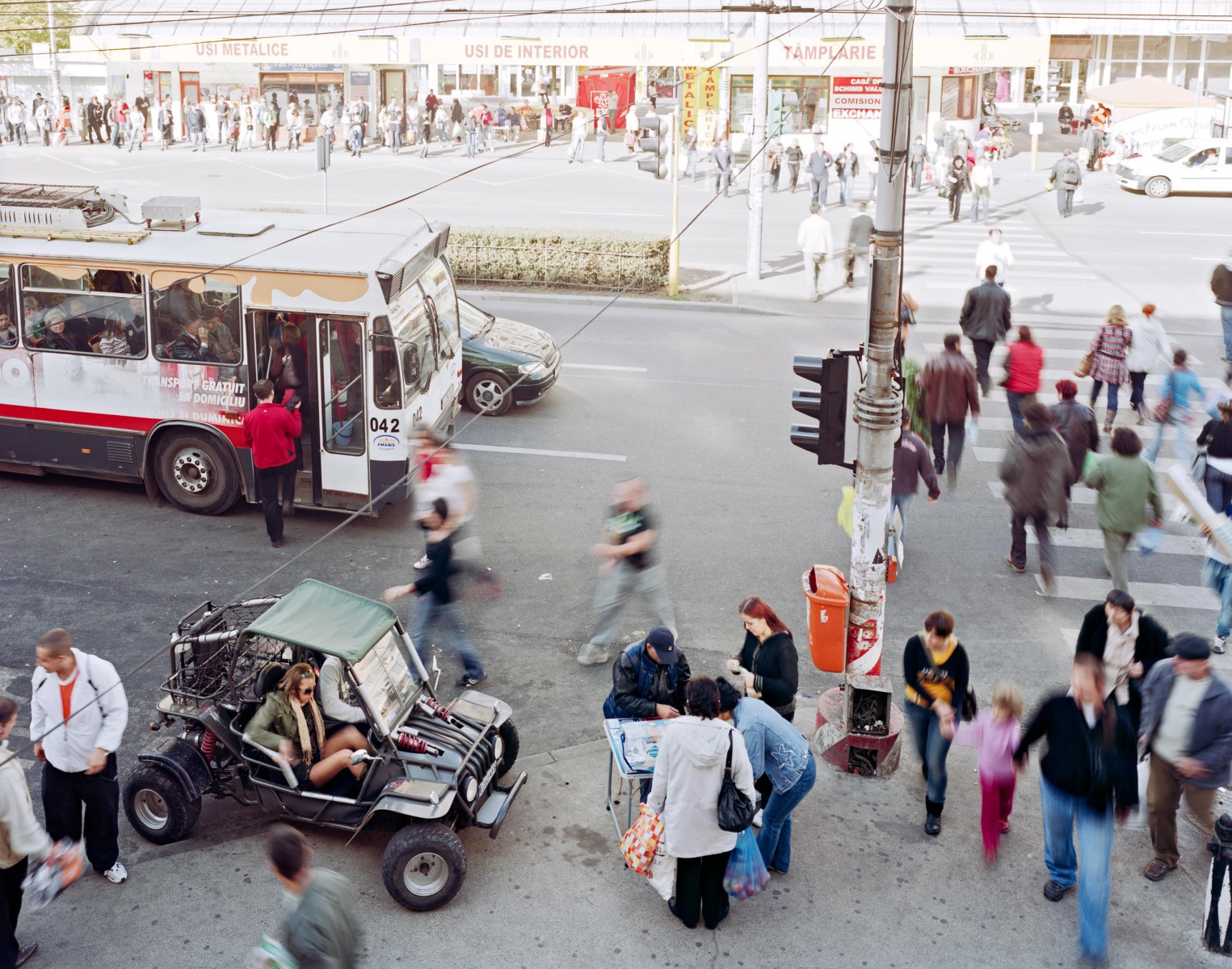
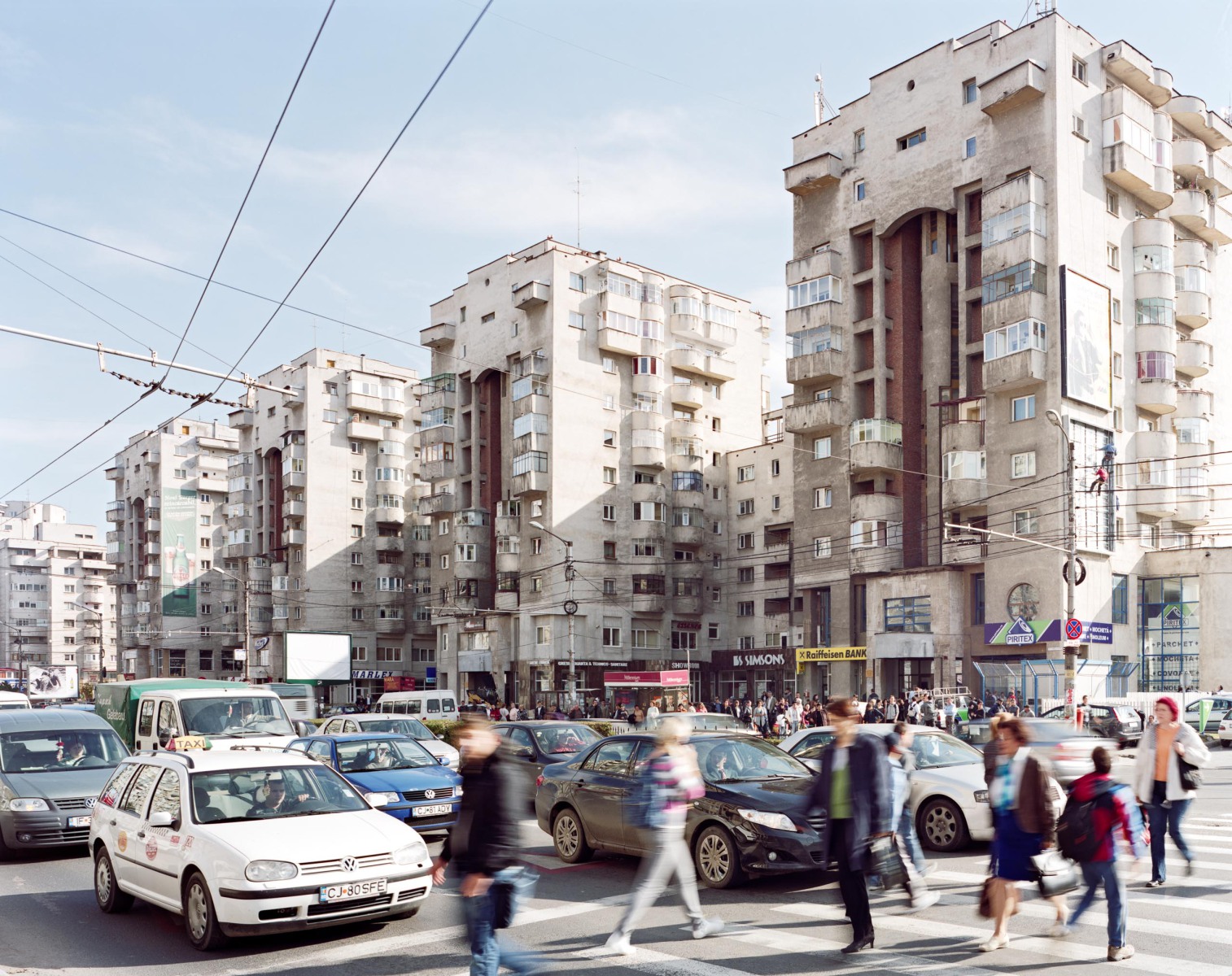
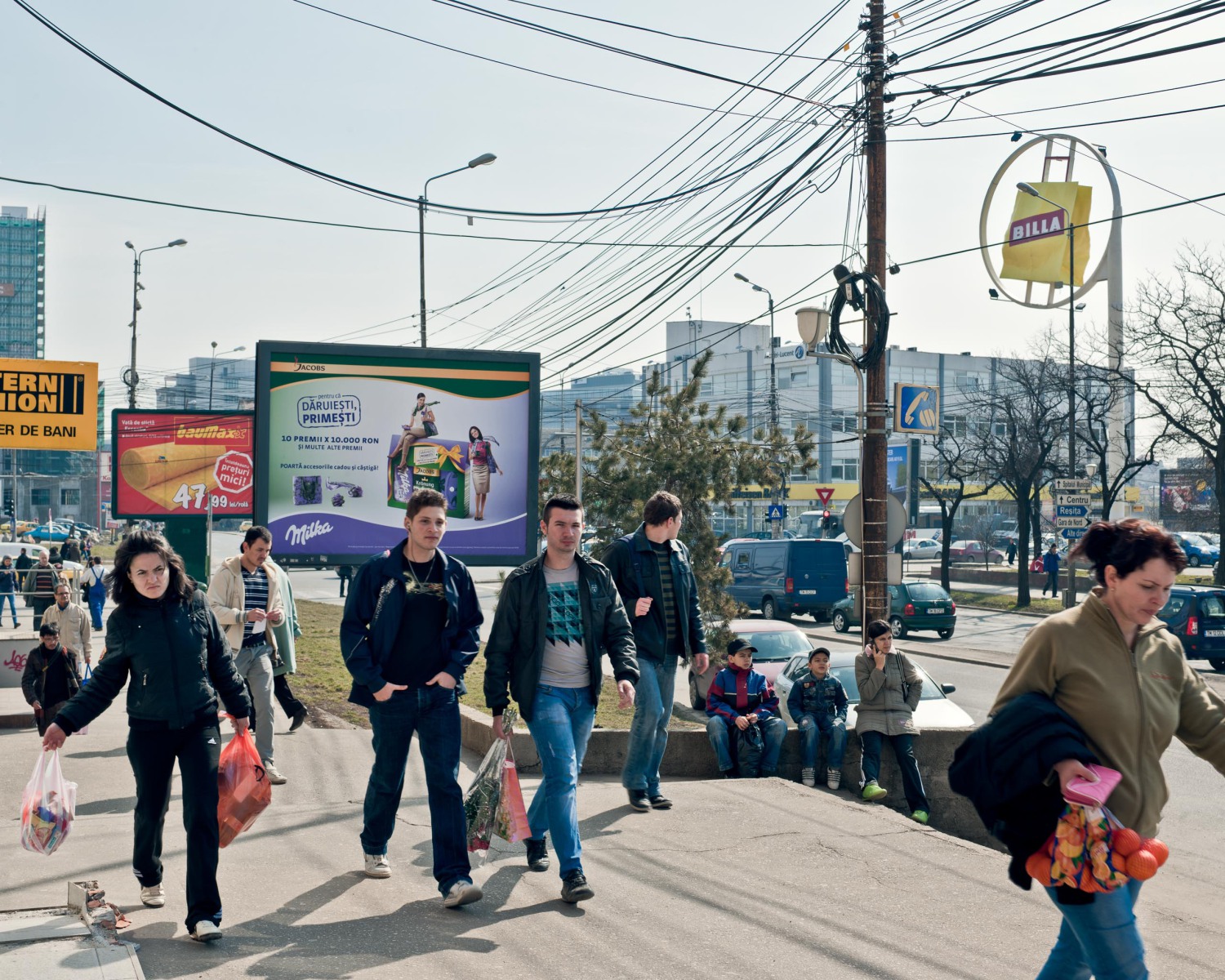


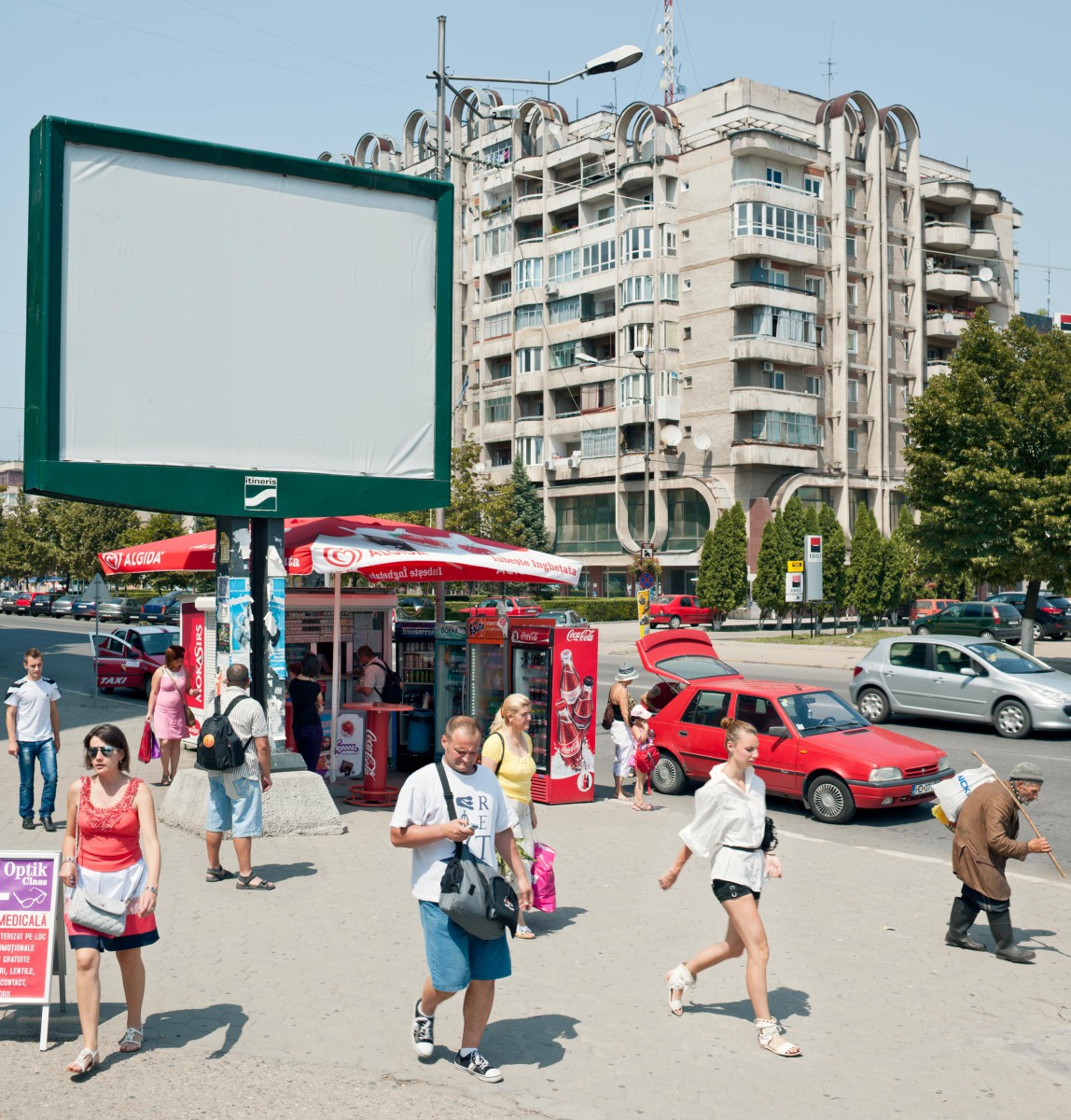

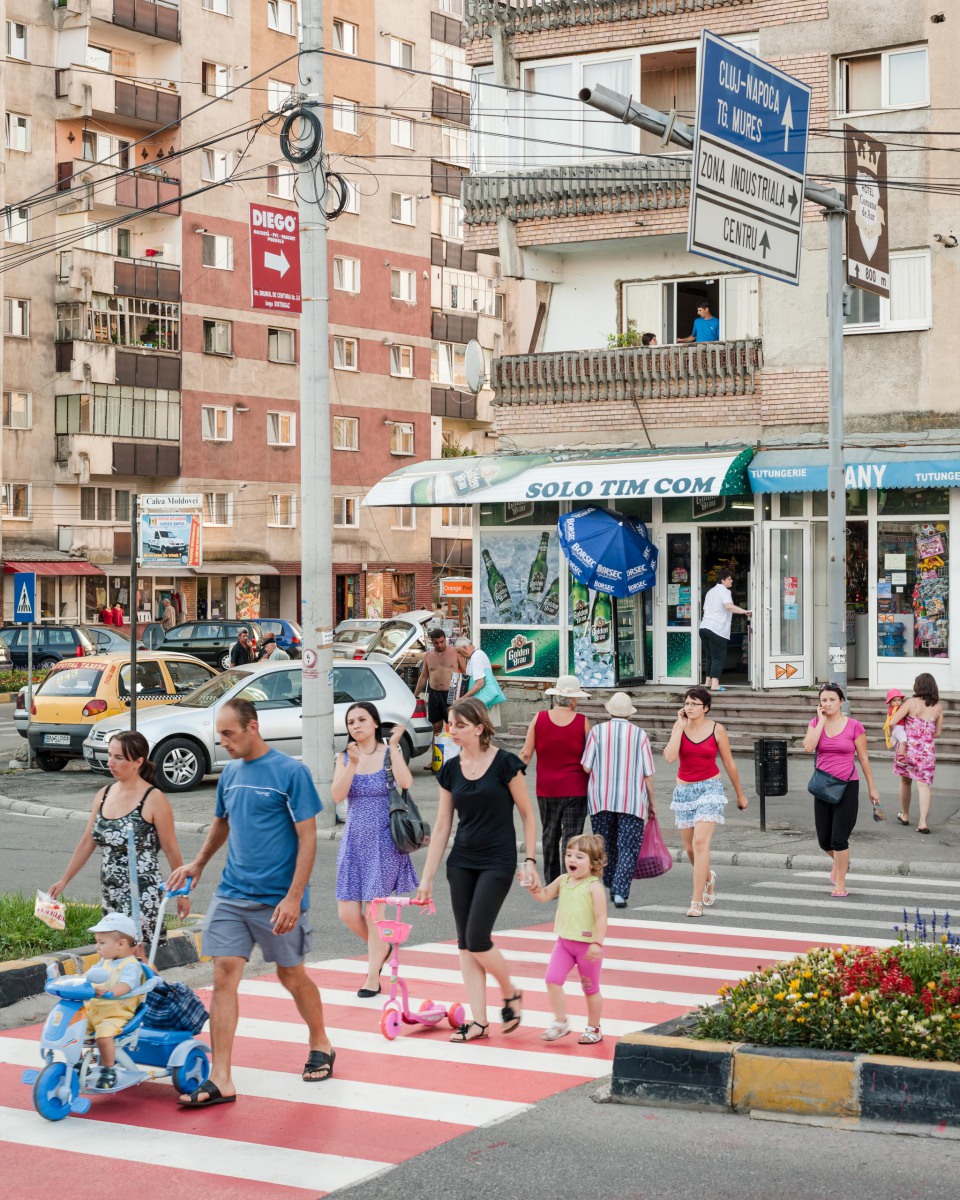
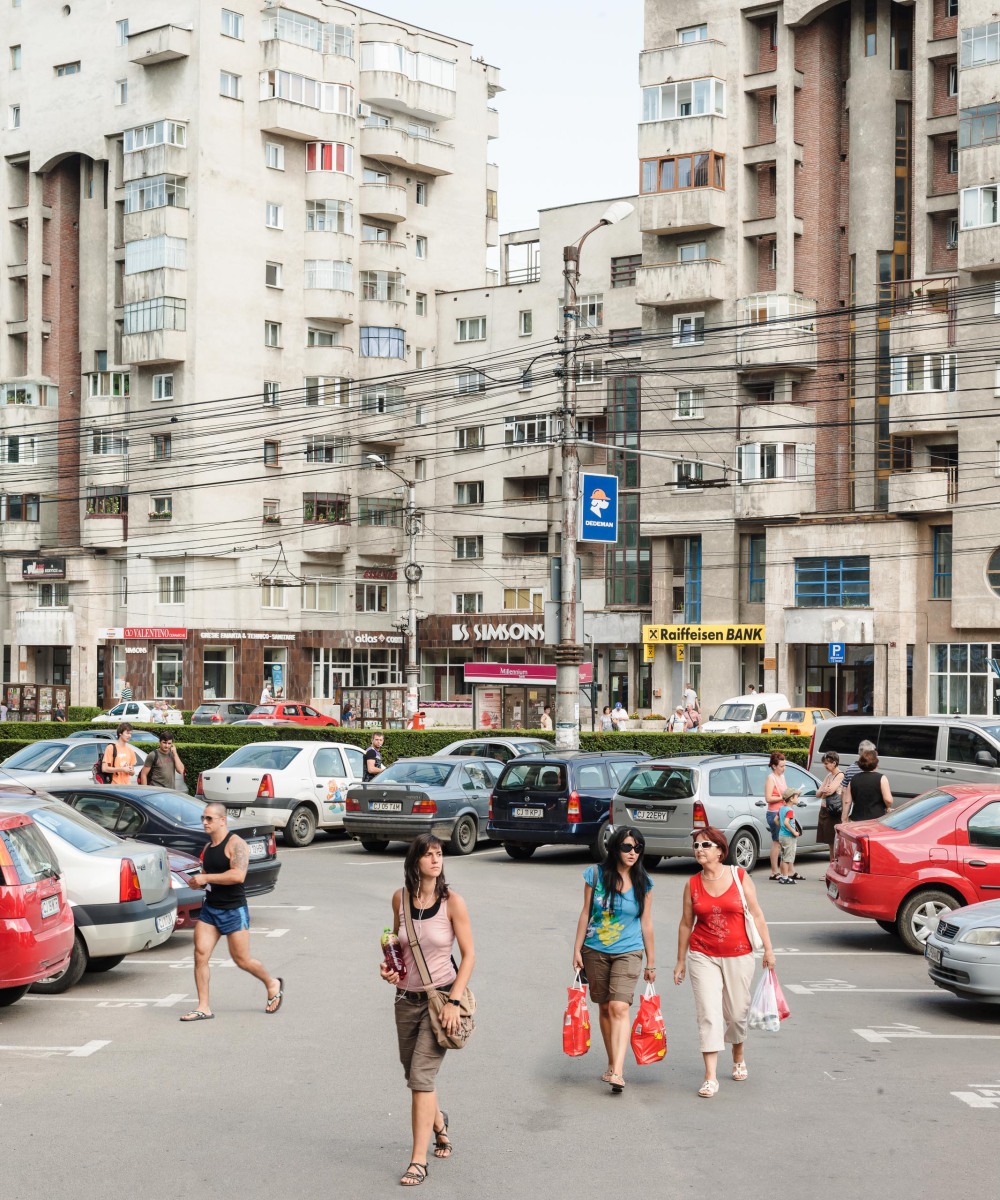

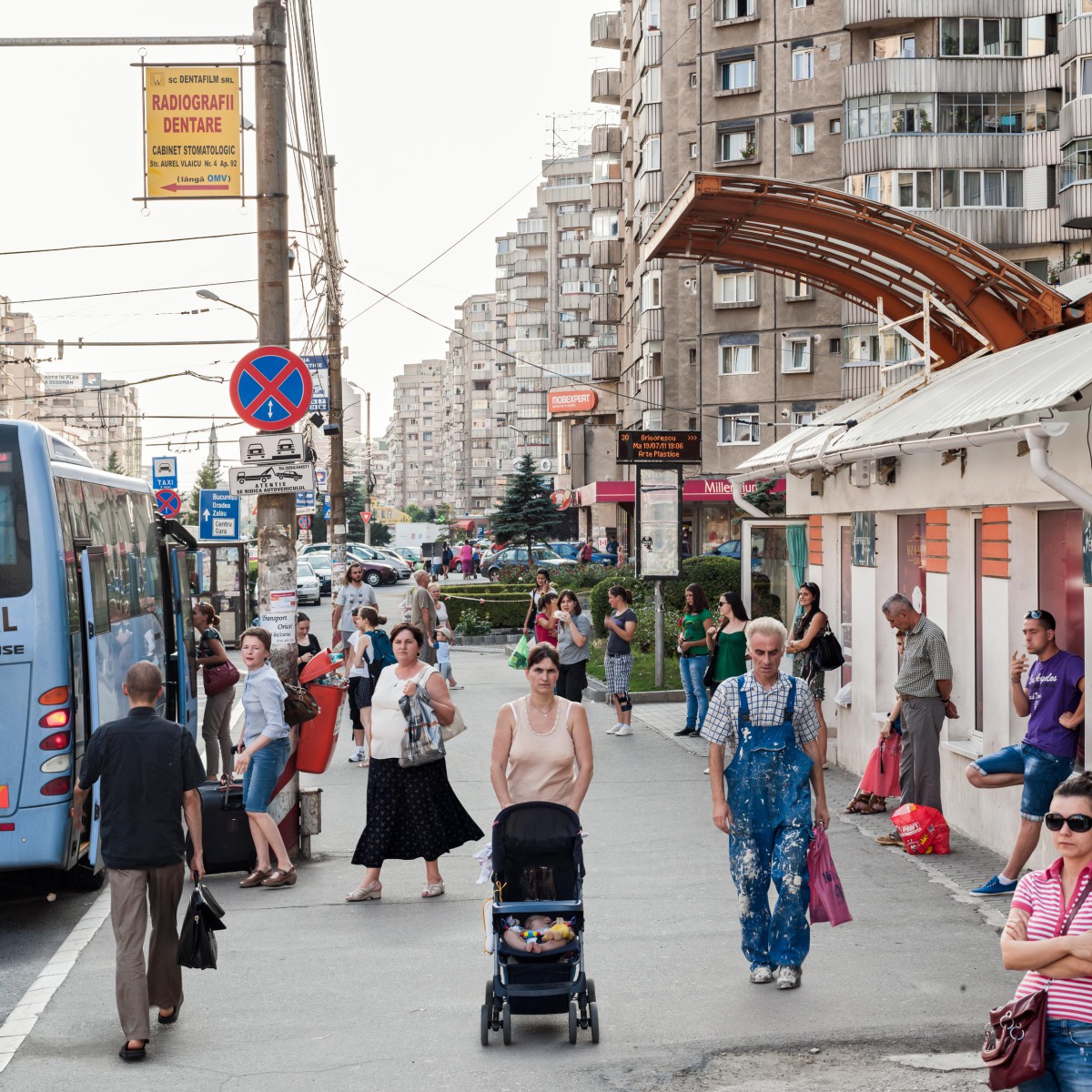

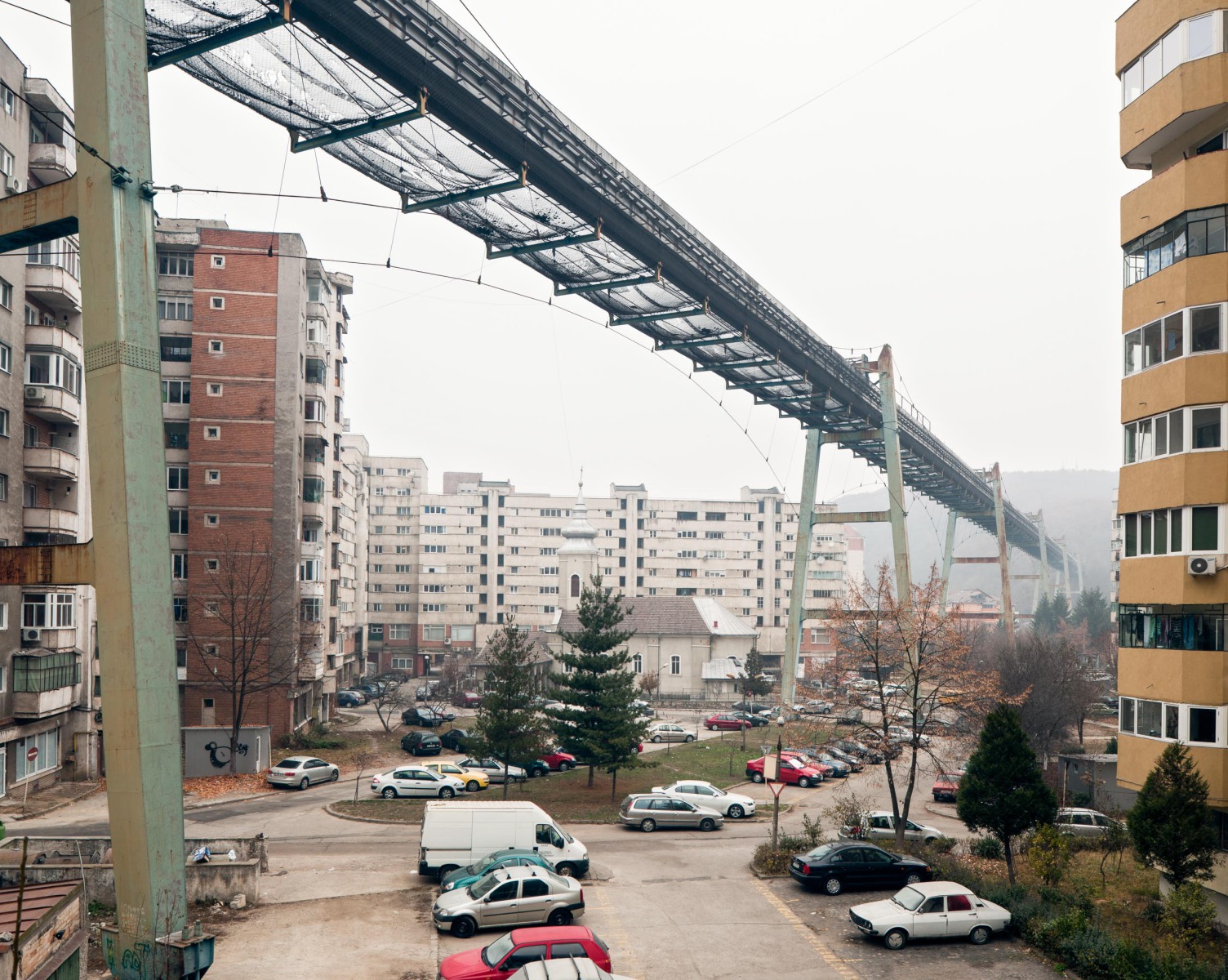

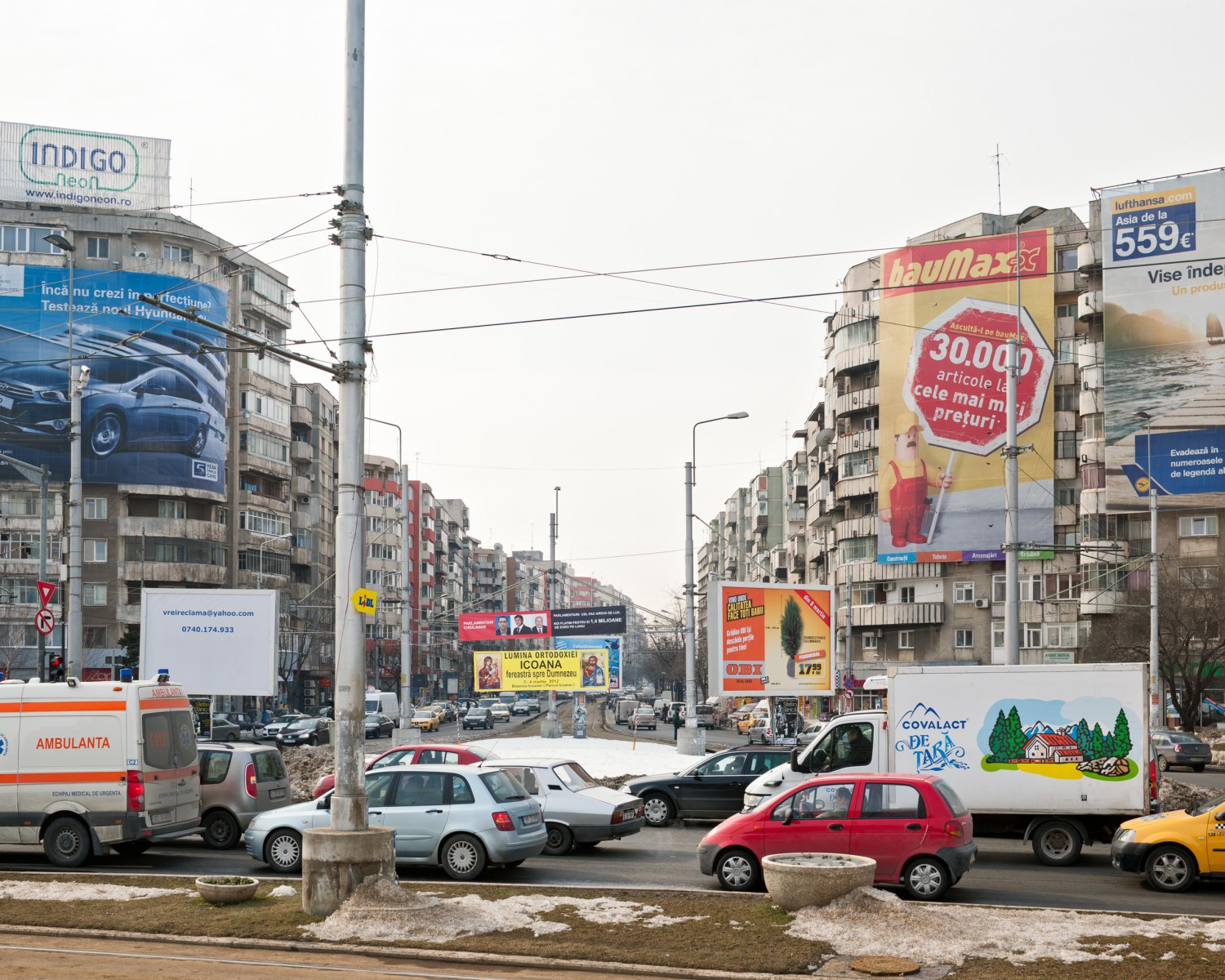
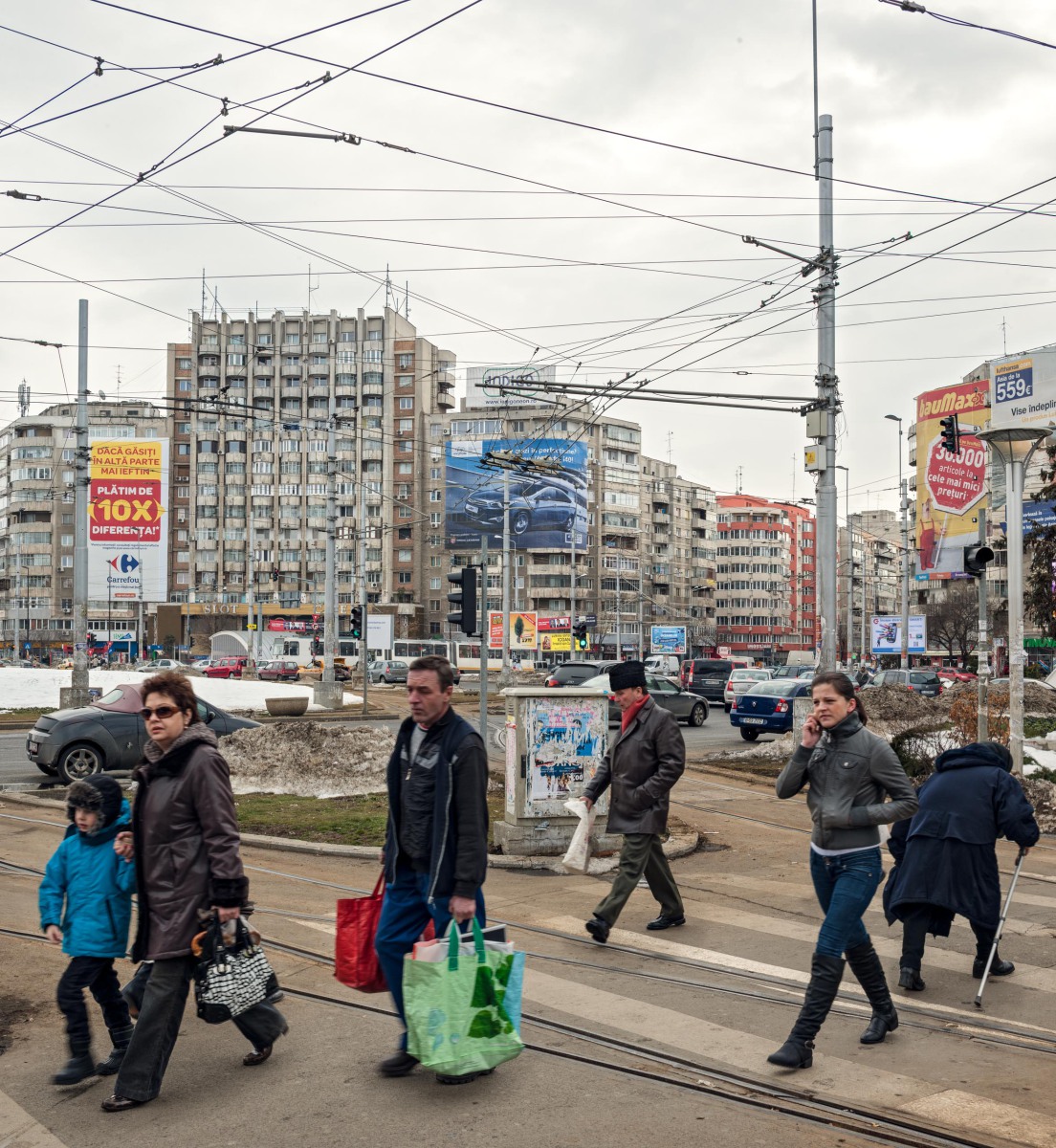
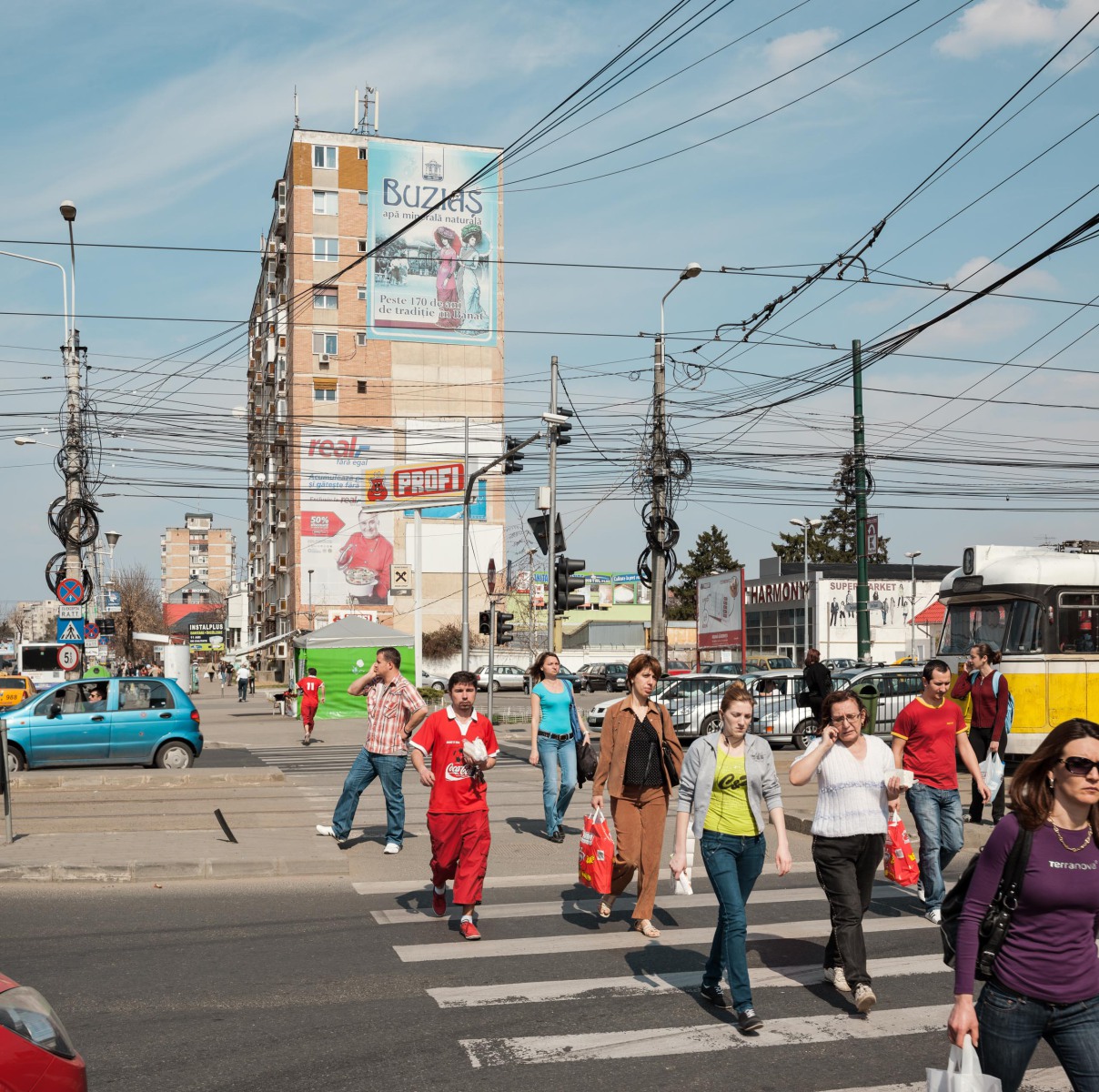
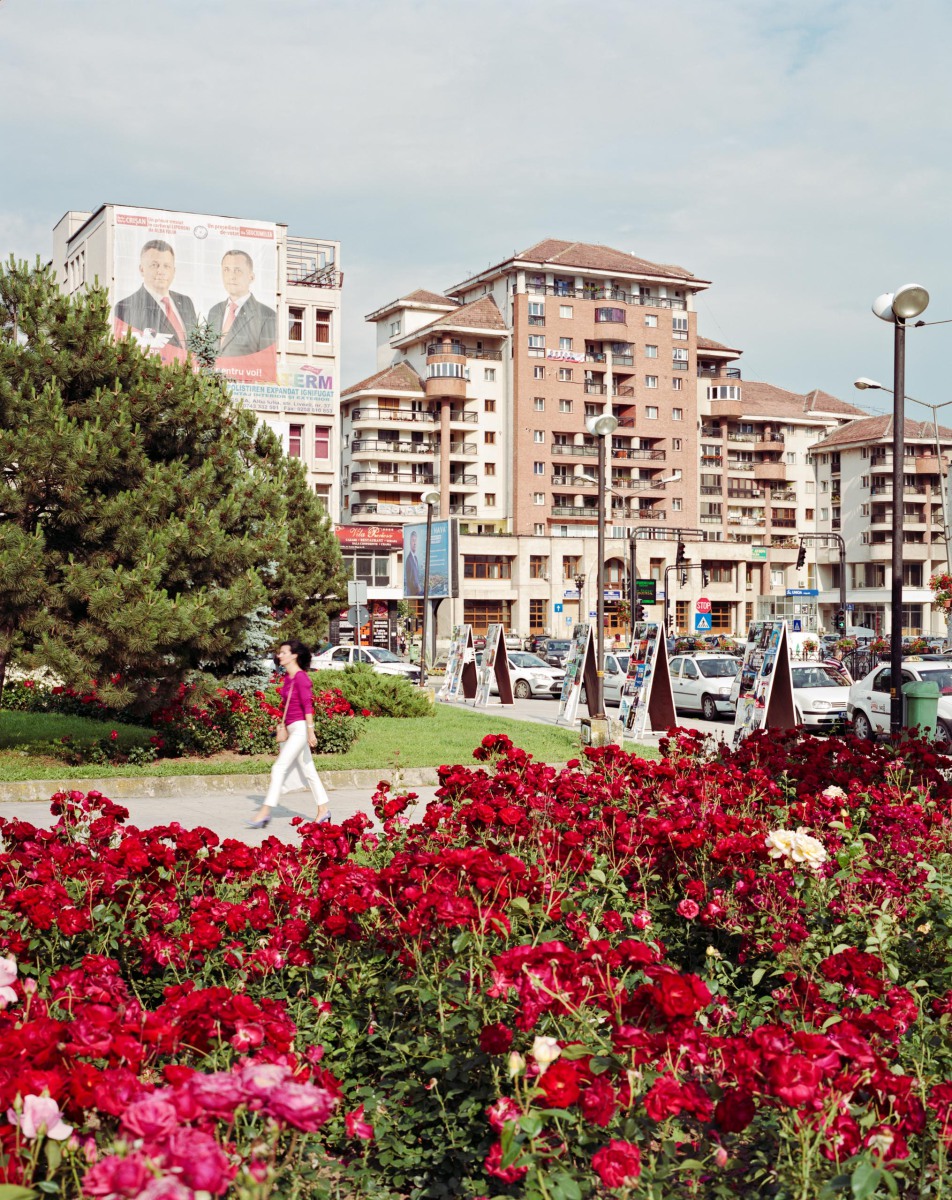

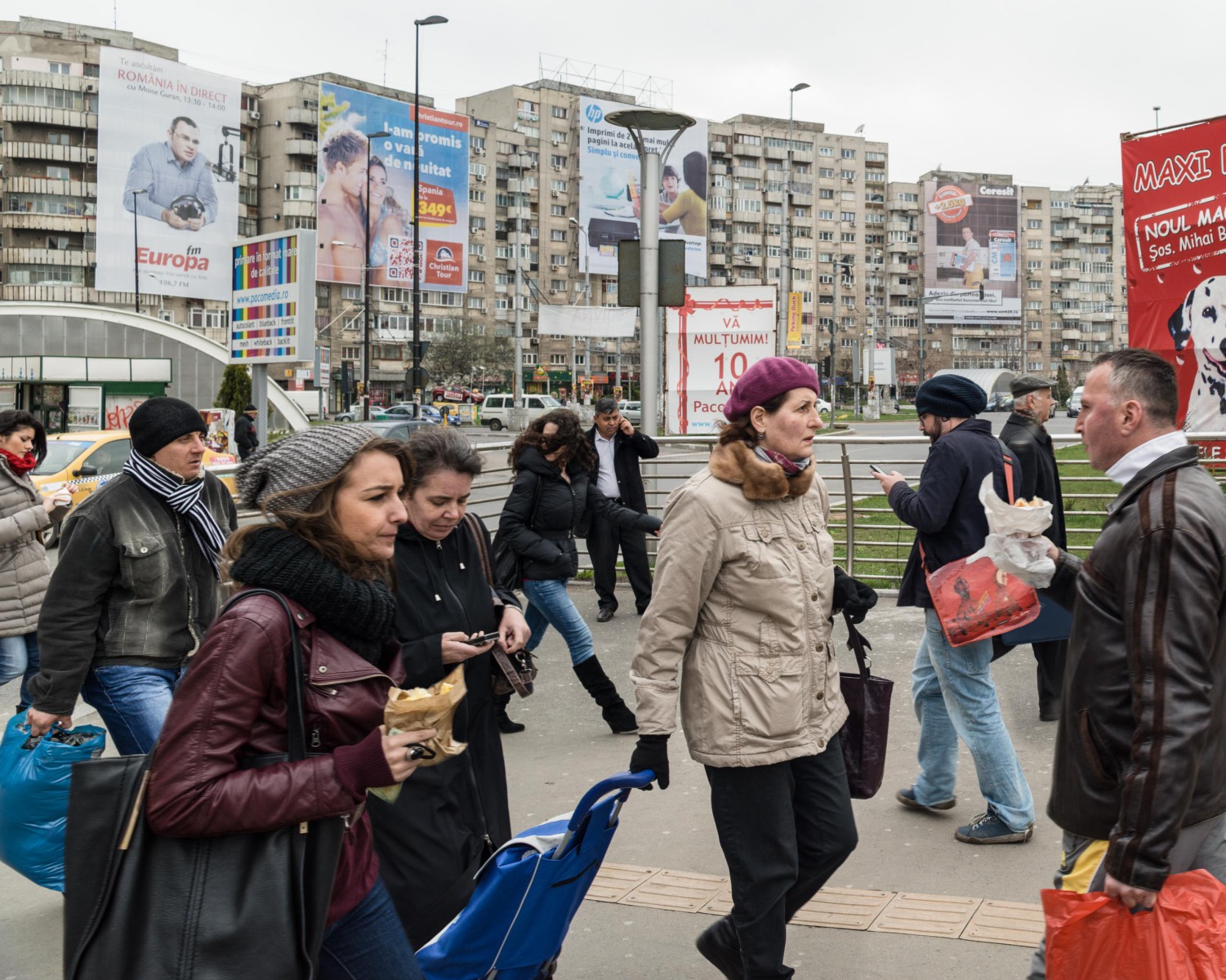
In the 60’s to the beginning of the 80’s in Romania, as everywhere else in the world, cities were massively expanded with high-rise residential buildings. In Romania, these quarters were propagated by the communist party as a symbol of socialist achievements. Here, the proletariat was supposed to live smartly and in much better conditions than under capitalism.
As a child, I often went with my parents to visit relatives or friends who lived in these neighborhoods, so I strongly associate these areas with the communist period in Romania. I was very impressed by these large blocks of houses, by the long boulevards along which these houses were lined up, but also somewhat disturbed by a certain desolation that prevailed in these neighborhoods.
More than 20 years after the fall of communism, I visited these neighborhoods again. With my camera, I captured the changes since that time. The most striking transformations are the huge colorful advertising billboards that cover several floors and countless large churches that have been newly built between the apartment blocks.
However, the most important thing to me about this project are the people that can be found in this quarter. They represent the present and the city architecture is only their stage. In the pictures of this series the people are represented in diorama-like human scenes. The viewer (or photographer) is invisible and every single protagonist on the street is on his own way, from one place to another, embedded in his everyday life.
Note: individual images in this series were created from multiple shots. A collage allows me to better capture the impression about these people, their movement and the mood of the street in a single image. These images are intended less for quick viewing on the Internet but as large contemplative formats.
In the 60’s to the beginning of the 80’s in Romania, as everywhere else in the world, cities were massively expanded with high-rise residential buildings. In Romania, these quarters were propagated by the communist party as a symbol of socialist achievements. Here, the proletariat was supposed to live smartly and in much better conditions than under capitalism.
As a child, I often went with my parents to visit relatives or friends who lived in these neighborhoods, so I strongly associate these areas with the communist period in Romania. I was very impressed by these large blocks of houses, by the long boulevards along which these houses were lined up, but also somewhat disturbed by a certain desolation that prevailed in these neighborhoods.
More than 20 years after the fall of communism, I visited these neighborhoods again. With my camera, I captured the changes since that time. The most striking transformations are the huge colorful advertising billboards that cover several floors and countless large churches that have been newly built between the apartment blocks.
However, the most important thing to me about this project are the people that can be found in this quarter. They represent the present and the city architecture is only their stage. In the pictures of this series the people are represented in diorama-like human scenes. The viewer (or photographer) is invisible and every single protagonist on the street is on his own way, from one place to another, embedded in his everyday life.
Note: individual images in this series were created from multiple shots. A collage allows me to better capture the impression about these people, their movement and the mood of the street in a single image. These images are intended less for quick viewing on the Internet but as large contemplative formats.


